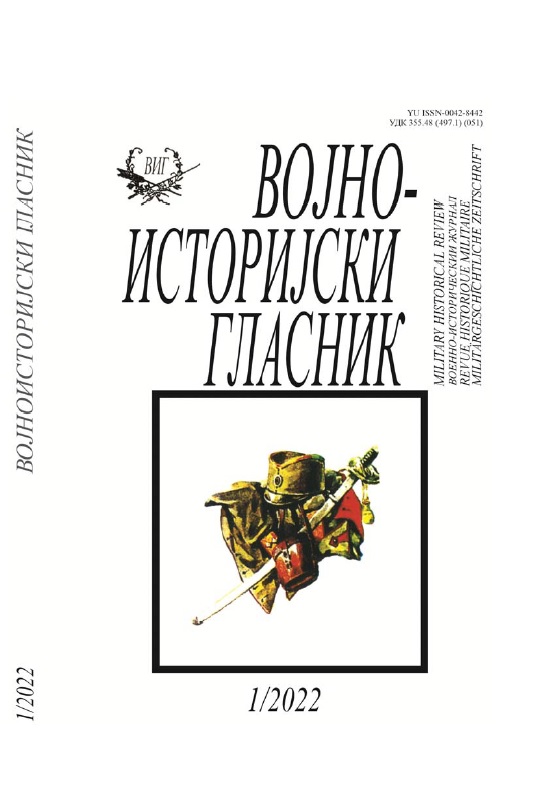ЈУГОСЛОВЕНСКА НАРОДНА АРМИЈА У БАЊАЛУЦИ (1945‒1992)
THE YUGOSLAV PEOPLEʼS ARMY IN BANJA LUKA (1945–1992)
Author(s): Nikola OžegovićSubject(s): History, Military history
Published by: Institut za strategijska istraživanja
Keywords: Banja Luka; Bosnia and Herzegovina; Yugoslav Peopleʼs Army; military infrastructure; military education; military industry; Territorial Defense
Summary/Abstract: In the military‐territorial organization of Yugoslavia after the Second World War, Banja Luka was a part of the 6th Army, whose headquarters were in Sarajevo. In the beginning of 1948, from the former 6th Army, the 7th Military District was formed. The military area of Banja Luka was supposed to be the 5th Corps during the war. In 1983, 58 Yugoslav Peopleʼs Army war units and 21 Territorial Defense war units were manned by conscripts and material and technical means from the territory of the Banja Luka municipality. As of 1990, the data on 50,624 conscripts in the municipality of Banja Luka were kept. A total of 4,568 conscripts or 2.28% of the total population of the municipality were engaged in all units of the Territorial Defense. For the needs of building the military infrastructure, the Roman Catholic monastery ”Nazareth” was nationalized, and in several waves, thousands of Serbian peasants were evicted from the hilly and mountainous area of Manjaca. With the implementation of repressive measures, a wide area whose population belonged to the royalist movement during the Second World War was evicted, and the Yugoslav Peopleʼs Army military training ground was built on it. Due to a combination of historical circumstances, Banja Luka has become an important center of military education. After the Resolution of the Inform Bureau, in September 1948, the Tank School Center (TSC) was moved from Bela Crkva in Banat, due to the proximity of the Romanian border, to Banja Luka. Over time, this institution developed into the Armored and Mechanized Units School Center ”Petar Drapšin”. Near Banja Luka, a significant demonstration exercise was performed as a part of the visit of the high US military delegation to Yugoslavia, which began in October 1951. During 1952, representatives of the US military mission visited two tank brigades and the Tank Officer School in Banja Luka. The Army played an important role in modernizing the undeveloped areas of the country, including the wider Banja Luka region, the Bosnian Krajina. Bosnia and Herzegovina benefited significantly from the establishment of the military industry in this republic, which was given strategic importance, due to the expected invasion from the East after 1948. A significant role in the military industry was played by the Aviation Institute ʼCosmosʼ, which has been operating in Banja Luka since 1958. Most of the infrastructure and combat assets of the Fifth Corps of the YPA from Banja Luka were inherited by the First Krajina Corps of the Army of the Republic of Srpska, as the largest corps of the ARS, that played a key role in the defense of the Republic of Srpska during the civil war in the former SR Bosnia and Herzegovina.
Journal: Vojnoistorijski glasnik
- Issue Year: 2022
- Issue No: 1
- Page Range: 154-176
- Page Count: 23
- Language: Serbian

